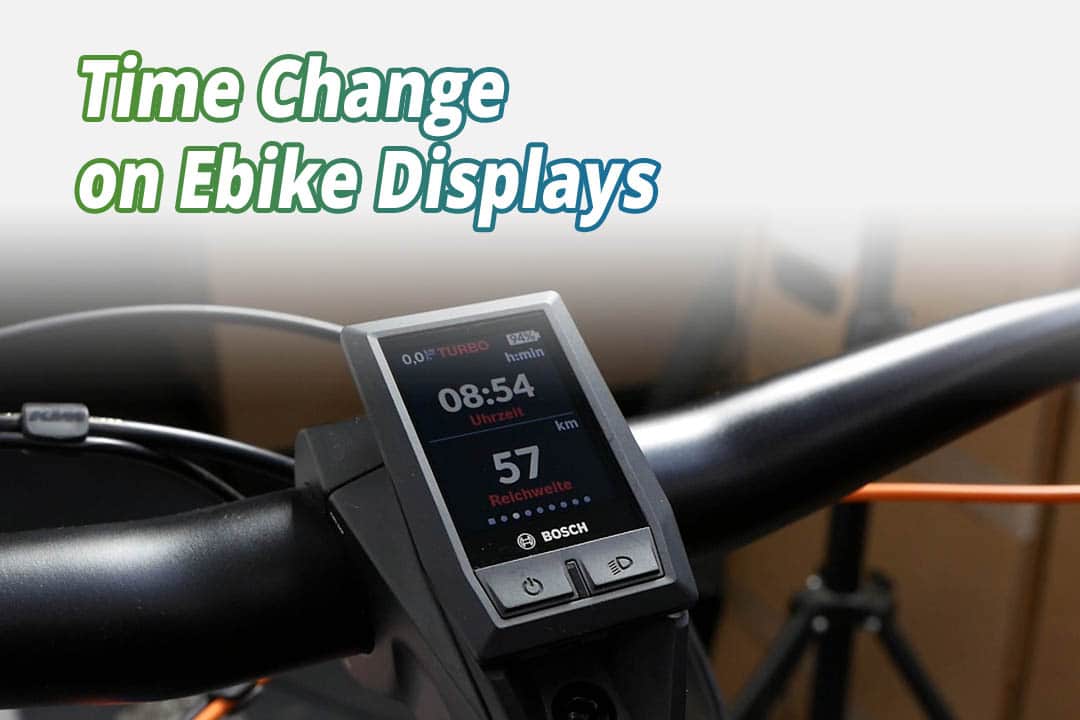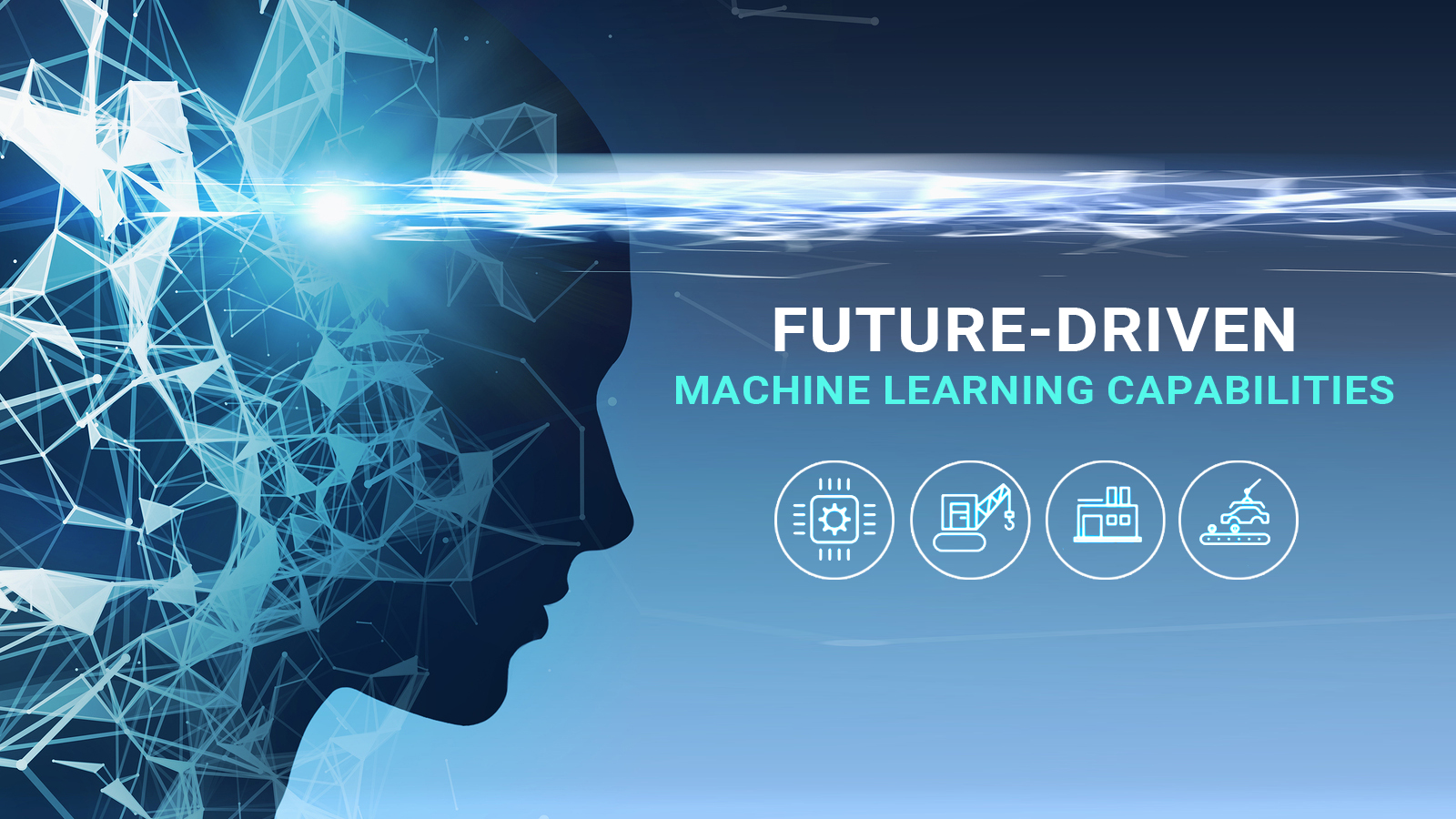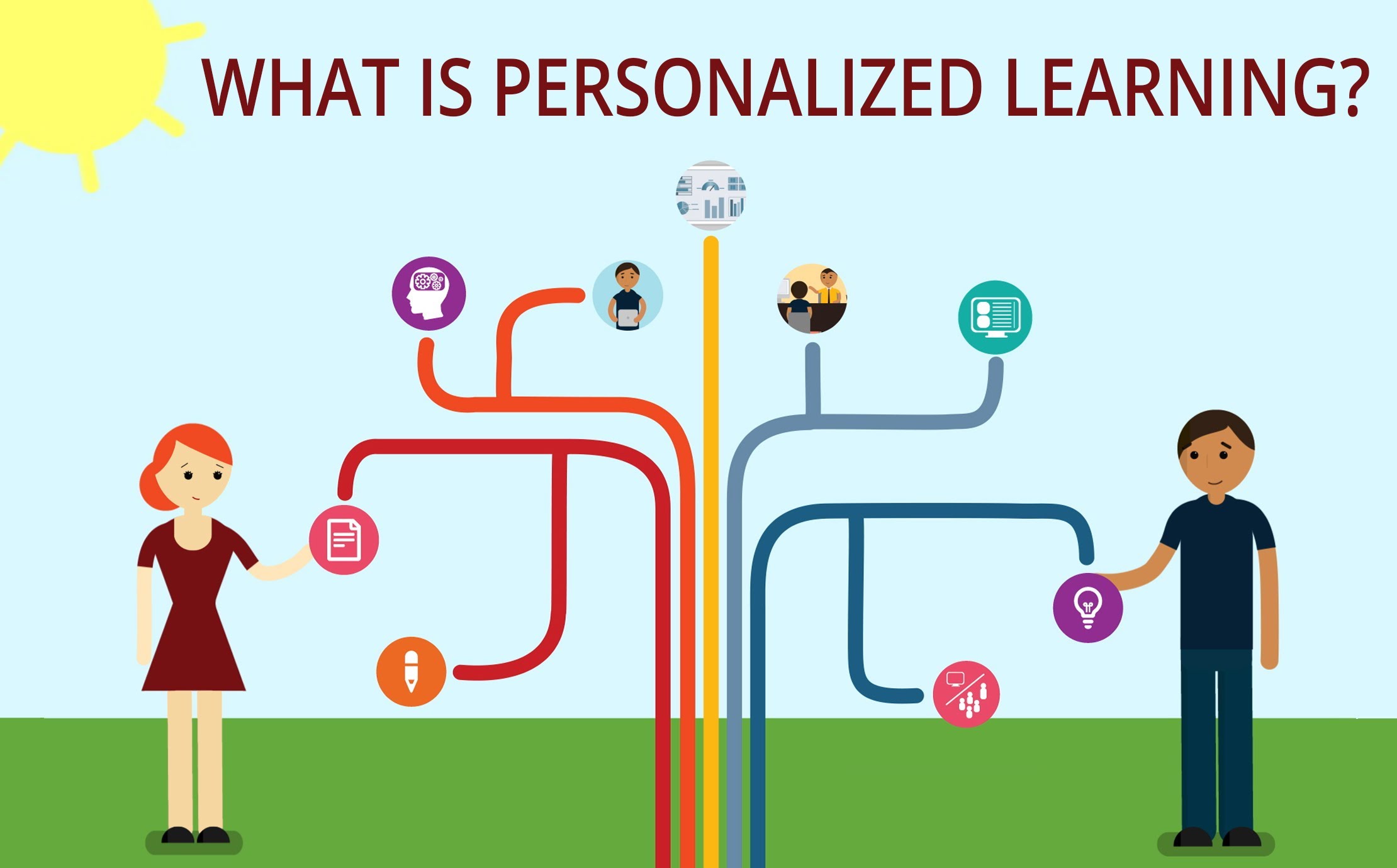What is Machine Learning and How Can it Enhance eBike Settings?
Machine learning, a subset of artificial intelligence, focuses on the development of algorithms that enable computers to learn from and make decisions or predictions based on data. By analyzing patterns and identifying trends, machine learning algorithms can adapt and improve over time, providing increasingly accurate and personalized results. This technology has the potential to revolutionize various industries, including the eBike market, by offering tailored experiences for individual riders.
Machine learning for personalized eBike settings involves utilizing data collected from eBike sensors, user inputs, and third-party applications to optimize various aspects of the eBike experience. By analyzing rider preferences, habits, and environmental factors, machine learning algorithms can adjust parameters such as pedal resistance, motor power, and other settings to create a more enjoyable and efficient ride. For instance, a rider who frequently engages in uphill rides may benefit from a machine learning system that automatically adjusts motor assistance to compensate for the incline, ensuring a smooth and effortless ride.

Understanding Rider Preferences: Data Collection Methods
Machine learning for personalized eBike settings relies heavily on data collection to understand rider preferences and habits. By gathering and analyzing relevant data, machine learning algorithms can tailor eBike settings to individual riders, enhancing their overall experience. This section will discuss various data collection methods, emphasizing the importance of data privacy and consent in this context.
User Surveys
User surveys are a traditional yet effective way to gather information about rider preferences. Surveys can include questions about rider demographics, riding habits, preferred terrain, and desired features. By analyzing survey responses, manufacturers can gain valuable insights into rider preferences and tailor eBike settings accordingly. However, surveys may not always provide accurate or up-to-date information, as riders may not recall their habits accurately or their preferences may change over time.
Telemetry Data from eBikes
Telemetry data, or data collected directly from eBikes, offers a wealth of information about rider behavior and preferences. eBike sensors can collect data on speed, pedal cadence, motor power, and battery life, among other metrics. By analyzing this data, machine learning algorithms can identify patterns and trends in rider behavior, enabling them to adjust eBike settings proactively. For instance, if a rider consistently struggles with pedal resistance on uphill climbs, the machine learning system can automatically adjust the settings to provide additional assistance.
Third-Party Integrations
Third-party integrations, such as fitness apps, can provide valuable context about riders’ overall fitness levels, goals, and preferences. By integrating eBike data with fitness app data, manufacturers can create a more comprehensive picture of riders’ needs and preferences. For example, if a rider is training for a long-distance cycling event, the eBike’s machine learning system can adjust settings to better support their training regimen.
Data Privacy and Consent
Data privacy and consent are crucial considerations when collecting and analyzing rider data. Manufacturers must ensure that they obtain explicit consent from riders before collecting and using their data. Additionally, manufacturers should provide transparent privacy policies that outline how data is collected, stored, and used. By prioritizing data privacy and consent, manufacturers can build trust with their customers and ensure a positive user experience.

Machine Learning Techniques for Personalized eBike Settings
Machine learning for personalized eBike settings involves the use of various techniques to analyze data and learn patterns, enabling eBikes to adapt to individual riders’ preferences and habits. This section will discuss popular machine learning techniques, such as clustering algorithms, decision trees, and neural networks, and provide examples of how these techniques can be applied to optimize eBike performance and rider satisfaction.
Clustering Algorithms
Clustering algorithms are a type of unsupervised machine learning technique that can be used to group similar data points together. In the context of eBike settings, clustering algorithms can be used to identify patterns in rider behavior and preferences, enabling eBikes to adjust settings accordingly. For example, a clustering algorithm might identify a group of riders who consistently use higher levels of pedal assistance on uphill climbs and adjust the settings for future rides to better support their preferences.
Decision Trees
Decision trees are a type of supervised machine learning technique that can be used to make predictions based on input data. In the context of eBike settings, decision trees can be used to predict rider preferences based on factors such as terrain, weather conditions, and rider demographics. For example, a decision tree might predict that a rider who is over 60 years old and riding on a flat surface will prefer lower levels of pedal resistance. By using decision trees to make predictions, eBikes can adjust settings proactively to better support rider preferences.
Neural Networks
Neural networks are a type of machine learning technique inspired by the structure and function of the human brain. Neural networks can be used to analyze large amounts of data and identify complex patterns and relationships. In the context of eBike settings, neural networks can be used to analyze data from multiple sources, such as telemetry data from eBikes and third-party fitness apps, to create a more comprehensive picture of rider behavior and preferences. By using neural networks to analyze data, eBikes can adjust settings in real-time to better support rider needs and preferences.
Examples of Machine Learning Techniques in Action
Machine learning techniques can be applied in various ways to optimize eBike performance and rider satisfaction. For example, a machine learning system might use clustering algorithms to identify groups of riders with similar preferences and adjust settings accordingly. Alternatively, a decision tree might be used to predict rider preferences based on factors such as terrain, weather conditions, and rider demographics. By using machine learning techniques to analyze data and learn patterns, eBikes can provide a more personalized and enjoyable riding experience for individual riders.

Real-World Applications: eBike Brands Embracing Machine Learning
Machine learning for personalized eBike settings is becoming increasingly popular in the eBike industry, with several brands incorporating this technology into their products. This section will highlight real-world examples of eBike brands embracing machine learning, including VanMoof’s Smart Bike and Cowboy’s connected eBikes. We will discuss the benefits and features of these eBikes, as well as user feedback and reviews.
VanMoof’s Smart Bike
VanMoof is a Dutch eBike brand that has integrated machine learning into its Smart Bike. The Smart Bike uses a range of sensors to collect data on rider behavior, such as pedal power, speed, and GPS location. This data is then analyzed using machine learning algorithms to optimize eBike performance and rider satisfaction. For example, the Smart Bike can adjust pedal resistance based on the rider’s preferred cadence, making it easier to maintain a consistent speed.
Users can also customize their riding experience using the VanMoof app, which allows them to adjust settings such as motor power and lighting. The app also includes features such real-time location tracking and theft prevention, making it easier to secure and manage the eBike. User feedback for the VanMoof Smart Bike has been overwhelmingly positive, with many praising its sleek design, intuitive interface, and personalized riding experience.
Cowboy’s Connected eBikes
Cowboy is a Belgian eBike brand that has also embraced machine learning for personalized settings. Cowboy’s connected eBikes use sensors to collect data on rider behavior, such as pedal power, speed, and GPS location. This data is then analyzed using machine learning algorithms to optimize eBike performance and rider satisfaction. For example, the eBike can adjust motor power based on the rider’s preferred cadence, making it easier to maintain a consistent speed.
Cowboy’s connected eBikes also include features such as real-time location tracking, theft prevention, and automatic software updates. The eBike’s interface is minimalist and intuitive, with a single button for power and a smartphone app for customizing settings. User feedback for Cowboy’s connected eBikes has been positive, with many praising its sleek design, intuitive interface, and personalized riding experience.
Benefits and Features of Machine Learning for Personalized eBike Settings
Machine learning for personalized eBike settings offers several benefits and features, including:
- Real-time adaptive settings: eBikes can adjust settings in real-time based on rider behavior and preferences.
- Predictive maintenance: eBikes can predict when maintenance is required, reducing downtime and repair costs.
- Integration with smart cities and the Internet of Things (IoT): eBikes can communicate with other devices and infrastructure, such as traffic lights and charging stations.
- Improved rider satisfaction: eBikes can provide a more personalized and enjoyable riding experience, increasing rider satisfaction and loyalty.
By incorporating machine learning into their products, eBike brands can differentiate themselves from competitors and provide a more personalized and enjoyable riding experience for their customers. However, it is important to address potential considerations and limitations, such as data privacy, model accuracy, and user acceptance, to maintain a positive user experience.

How to Implement Machine Learning for Personalized eBike Settings
Implementing machine learning for personalized eBike settings can be a complex process, but eBike manufacturers and developers can follow a step-by-step guide to ensure successful integration. Here are the key steps involved:
Step 1: Data Preprocessing
The first step in implementing machine learning for personalized eBike settings is data preprocessing. This involves collecting and cleaning data from various sources, such as user surveys, telemetry data from eBikes, and third-party integrations. Data preprocessing may also include feature engineering, where relevant features are identified and extracted from the raw data. This step is crucial for ensuring that the data is accurate, complete, and relevant for machine learning.
Step 2: Model Selection
The next step is to select the appropriate machine learning model for personalizing eBike settings. Popular machine learning techniques for this application include clustering algorithms, decision trees, and neural networks. The choice of model will depend on the specific use case and the type of data available. For example, clustering algorithms may be useful for identifying distinct groups of riders with similar preferences, while decision trees can be used to model the decision-making process of riders. Neural networks, on the other hand, can be used to model complex relationships between different variables.
Step 3: Training
Once the model has been selected, the next step is to train it using the preprocessed data. Training involves optimizing the model parameters to minimize the difference between the predicted and actual outcomes. This step may require significant computational resources, especially for complex models such as neural networks. It is important to ensure that the training data is representative of the target population and that the model is not overfitting to the training data.
Step 4: Evaluation
After the model has been trained, it is important to evaluate its performance using a separate test dataset. Evaluation metrics may include accuracy, precision, recall, and F1 score. It is important to ensure that the model is not only accurate but also generalizable to new data. If the model’s performance is not satisfactory, the model may need to be retrained or the data preprocessing steps may need to be refined.
Step 5: Deployment
Once the model has been trained and evaluated, it can be deployed in the eBike system. Deployment may involve integrating the model into the eBike firmware or cloud infrastructure. It is important to ensure that the model is robust and can handle real-world scenarios, such as noisy data and edge cases. It is also important to monitor the model’s performance over time and retrain it as necessary.
Best Practices and Potential Challenges
When implementing machine learning for personalized eBike settings, it is important to follow best practices, such as using appropriate data preprocessing techniques, selecting the right model, and evaluating the model’s performance. Potential challenges may include data privacy concerns, limited data availability, and computational resources. It is important to address these challenges by implementing appropriate data governance policies, using privacy-preserving techniques, and optimizing the model for efficiency.

The Future of Machine Learning in eBikes: Trends and Predictions
Machine learning has the potential to revolutionize the eBike industry, offering new and innovative ways to enhance rider experiences. As machine learning technology continues to evolve, we can expect to see several emerging trends and future predictions for personalized eBike settings. Here are some of the most exciting developments to watch:
Real-Time Adaptive Settings
One of the most promising trends in machine learning for personalized eBike settings is real-time adaptive settings. By using sensors and data analytics, eBikes can adjust settings in real-time based on the rider’s preferences, habits, and current riding conditions. For example, the eBike can automatically adjust pedal resistance and motor power based on the rider’s pedaling speed, terrain, and weather conditions. This can help to optimize eBike performance and rider satisfaction, providing a more personalized and enjoyable riding experience.
Predictive Maintenance
Another exciting trend in machine learning for personalized eBike settings is predictive maintenance. By analyzing data from sensors and components, eBikes can predict when maintenance is required, reducing downtime and repair costs. For example, the eBike can alert the rider when the battery needs to be replaced or when the brakes need to be adjusted. This can help to ensure that the eBike is always in top condition, providing a safer and more reliable riding experience.
Integration with Smart Cities and the Internet of Things (IoT)
As machine learning technology becomes more prevalent in smart cities and the IoT, we can expect to see increased integration between eBikes and these systems. For example, eBikes can communicate with traffic lights and other infrastructure to optimize routes and reduce congestion. They can also integrate with fitness apps and other devices to provide a more comprehensive and connected riding experience. This can help to enhance rider satisfaction, safety, and convenience, making eBikes a more attractive and practical transportation option.
Considerations and Limitations
While machine learning offers many exciting opportunities for personalized eBike settings, it is important to consider the potential limitations and challenges. Data privacy is a major concern, as eBikes collect and analyze sensitive data about the rider and their riding habits. It is essential to ensure that this data is stored securely and used responsibly, with the rider’s consent and permission. Model accuracy is another consideration, as machine learning models may not always be able to accurately predict rider preferences and habits. It is important to continuously monitor and improve model accuracy to ensure a positive user experience. Finally, user acceptance is a critical factor, as some riders may be hesitant to adopt machine learning technology due to concerns about privacy, security, and complexity. It is essential to design machine learning systems that are user-friendly, intuitive, and accessible to all riders, regardless of their technical expertise.
Considerations and Limitations of Machine Learning in eBikes
While machine learning offers many exciting opportunities for personalized eBike settings, it is important to consider the potential limitations and challenges. Data privacy is a major concern, as eBikes collect and analyze sensitive data about the rider and their riding habits. It is essential to ensure that this data is stored securely and used responsibly, with the rider’s consent and permission. Model accuracy is another consideration, as machine learning models may not always be able to accurately predict rider preferences and habits. It is important to continuously monitor and improve model accuracy to ensure a positive user experience. Finally, user acceptance is a critical factor, as some riders may be hesitant to adopt machine learning technology due to concerns about privacy, security, and complexity. It is essential to design machine learning systems that are user-friendly, intuitive, and accessible to all riders, regardless of their technical expertise.
Another limitation of machine learning in eBikes is the need for large amounts of high-quality data. Machine learning models require a significant amount of data to train and optimize, which can be challenging to collect and process. Additionally, the quality of the data is crucial, as low-quality or biased data can lead to inaccurate predictions and poor user experiences. It is essential to invest in robust data collection and preprocessing methods to ensure that machine learning models are accurate and effective.
Finally, machine learning models can be complex and difficult to interpret, making it challenging to identify and address issues or biases in the model. It is essential to invest in model interpretability and explainability methods to ensure that machine learning systems are transparent and trustworthy. This can help to build user trust and confidence in the system, leading to increased user acceptance and adoption.

Conclusion: The Power of Machine Learning for Personalized eBike Experiences
Machine learning for personalized eBike settings offers a wide range of benefits for both eBike manufacturers and riders. By analyzing data and learning patterns, machine learning algorithms can optimize eBike performance and tailor settings to individual rider preferences and habits. This can lead to increased rider satisfaction, engagement, and loyalty, as well as a competitive advantage for eBike brands.
To fully realize the potential of machine learning for personalized eBike settings, it is essential to prioritize continuous improvement and innovation. This includes investing in robust data collection and preprocessing methods, selecting appropriate machine learning techniques, and regularly evaluating and refining models to ensure accuracy and effectiveness. It is also crucial to prioritize data privacy, consent, and user acceptance, and to design machine learning systems that are transparent, trustworthy, and user-friendly.
In summary, machine learning for personalized eBike settings represents a powerful opportunity for eBike manufacturers and developers to enhance rider experiences and stay competitive in the market. By investing in machine learning technology and prioritizing user needs and preferences, eBike brands can create innovative and engaging products that meet the evolving needs of riders and contribute to the growth and success of the eBike industry.


